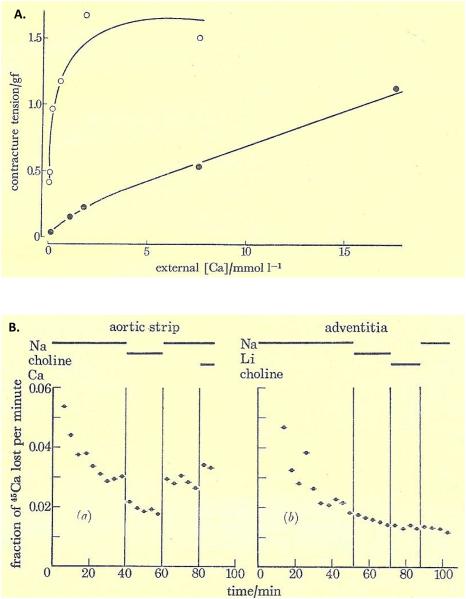Figure 2.
(A) Effect of the external Ca2+ concentration, [Ca2+]o, on contraction of rabbit aorta. Contractile tension (gf) is increased by reduction of [Na+]o. Either 80% (filled circles) or 100% (open circles) of the NaCl in the standard medium (137 mM) was replaced by equiosmotic sucrose. The greater effectiveness of low [Ca2+]o in inducing contraction when [Na+]o was lowered is evidence of “Nao-Cao antagonism”. (B) Reduction of [Na+]o decreases 45Ca2+ efflux (fraction of 45Ca2+ lost per min) in a rabbit aortic strip (left), but not in the isolated adventitia (right). The NaCl in the standard medium (137 mM) was replaced by equimolar LiCl or choline-Cl during the periods indicated by the bars at the top. To avoid influx of Ca2+ and dilution of intracellular tracer 45Ca2+, the efflux (extracellular) solutions were Ca-free and contained 0.5 mM EGTA, except during the period indicated by the “Ca” bar at the end of the experiment on the left. The Nao-dependent 45Ca2+ efflux in intact intact aortic strip is evidence of Na+/Ca2+ exchange. Reprinted from Reuter et al., 1973, with permission.

